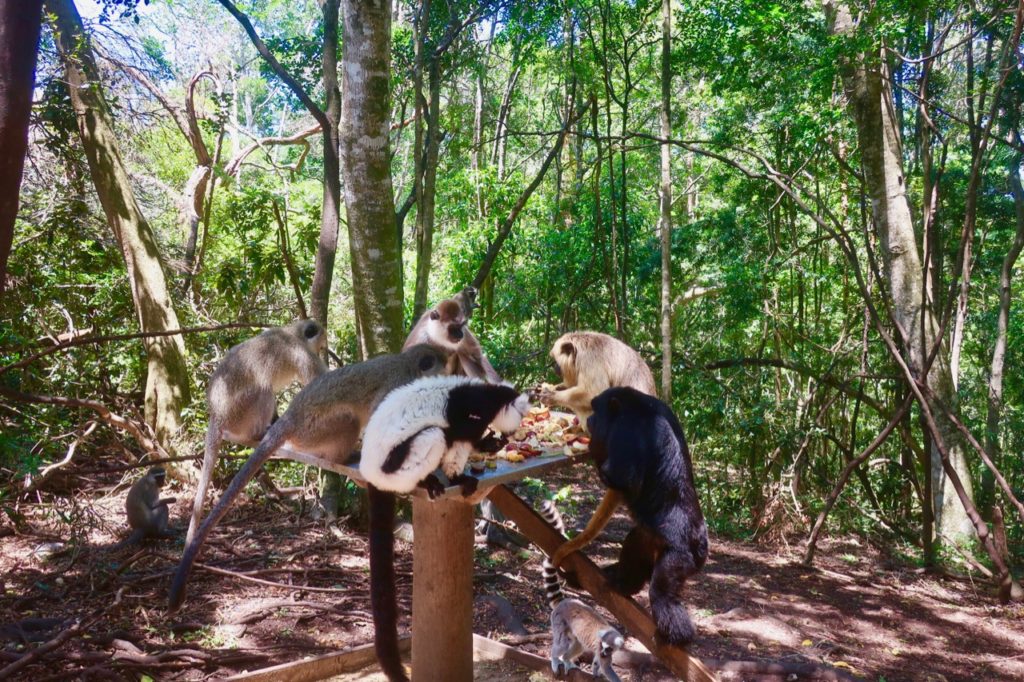Seeing wildlife in South Africa may be on top of your bucket list, or just one of the things in your itinerary. During my recent visit, I felt there were more places to see wildlife in South Africa, than anywhere else in the world. The reason being there are not just one or two national parks, there are countless reserves, safaris, game ranches, sanctuaries, farms, and more.
Perhaps you aren’t aware that many travelers go to South Africa for hunting and poaching as well. South Africa is one of the few countries in the world that allows private ownership of wild animals, so game ranching is a big industry. A simple google search will show you how many companies offer “trophy hunting” packages where you can select an animal to kill and bring back home. Many of them will claim that you are helping “conserve wildlife” by hunting the animals outside the parks that would otherwise harm agricultural land (which is usually not true). One such website offers an all-inclusive package of 1 x Impala, 1 x Blesbuck, 1 x Zebra, 1 x Redhartebeest, 1 x Warthog for only $5,000! Others, offer killing elephants, lions, leopards, hippos, and crocodiles. Sadly, majority of these hunters come from the US.

What I know is most of these animals are not really wild. They are the ones you have pet at so called “sanctuaries” that offer wildlife encounters (touching a lion, feeding a cub, walking with cheetahs, etc), even volunteer vacations taking care of animals. Therefore, the animals are attuned to humans. When they are released in a restricted area with a hunter, they don’t run away, and end up being killed rather easily.
So, if you want to see the Big 5, the best thing to do is see them in their natural habitats, which is mainly at Kruger National Park in South Africa, though there are a few other national parks where you can spot wildlife too.
If you don’t want to spend a lot of money going on a safari, or perhaps are traveling with young kids who won’t appreciate being in the wild, there are other options to see wildlife in South Africa sustainably.

Penguins at Boulder Beach
Watch African penguins at Boulder Beach near Simon’s Town, about an hour south of Cape Town. This beachfront penguin colony resides in the Table Mountain National Park Marine Protected Area. You can kayak around the beach or watch them breed, swim, and moult from wheelchair friendly boardwalks. When I was there in late December, I saw lots of babies! Admission: $5 adults; $3 kids

Big Cats at Panthera Africa
See white lions, Bengal tigers, leopards, cheetahs, caracals and more at this sanctuary. Panthera Africa rescues captive bred big cats from private homes, circuses, game ranches and other places. The nonprofit’s mission is to allow the cats to spend the rest of their lives abuse free. They have plenty of space to roam, playtime and food. But unlike other “cat sanctuaries,” you can only visit Panthera for couple of hours a day, and won’t have any physical contact with the animals. Admission: $14 adults; $10 kids

Elephants at Knysna Elephant Park
Here too you can see rescued orphaned elephants that are mostly sent on to private reserves to live out their lives. Advance reservations are needed for a guided visit where you will be briefly allowed to touch and feed an African elephant. The Knysna Elephant Park is a good place to learn about elephants, but if you want to see them in their natural habitat, go to Addo Elephant Park in the Eastern Cape. Admission: $23 adults; $12 kids; Free for under 5

Monkeys at Monkeyland Primate Sanctuary
Monkeyland is possibly the worlds first free roaming multi-specie primate sanctuary, located in Plettenberg Bay, South Africa. You will get up close with lemurs, howler monkeys, spider monkeys, capuchins and gibbons. You walk through a jungle-like setting through a thick canopy of trees and a hanging bridge, while the monkeys go about doing their daily business, oblivious to humans. The best part is seeing all different species of monkeys come together over the dinner table! Please do not touch the monkeys. Admission: $19 adults; $10 kids; Get a discount when booking two or more sanctuaries.

Exotic Birds at Birds of Eden Free Flight Sanctuary
This is most beautiful bird sanctuary I have visited anywhere in the world! You can easily spend an entire day walking through 2 hectares of trails with different habitats. Birds of Eden is home to over 3,500 birds of over 220 species, with the main focus being African birds. While it may not yet be a home for the rare cape parrot, which is infact the rarest African bird, there are still so many other beautiful birds to admire that you can’t not be happy walking around the sanctuary. Most of the birds are rescued caged birds that have only lived in small spaces and some are very friendly with humans. However, they go through a rehabilitation program where they relearn to fly, build flight muscles, and socialize with other birds. Admission: $19 adults; $10 kids; Get a discount when booking two or more sanctuaries.

Please keep in mind that when you are visiting a fake sanctuary, petting a wild animal, purchasing animal products (such as zebra skin, tiger bones or ivory jewelry), or keeping wild animals as pets, you are directly and indirectly involved in the exploitation of wildlife.
To learn more about volunteering with animals in South Africa and big cat conservation, watch my interview with Panthera.